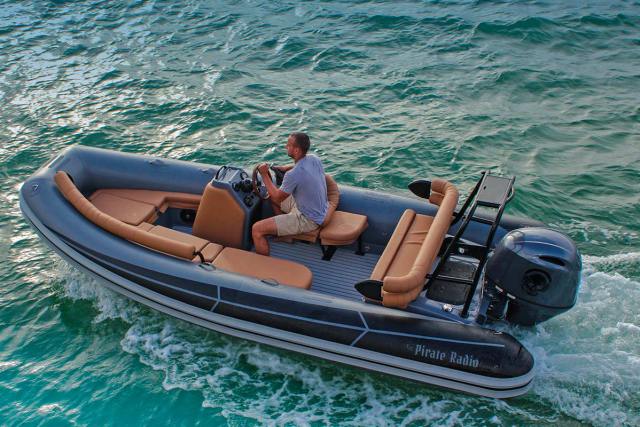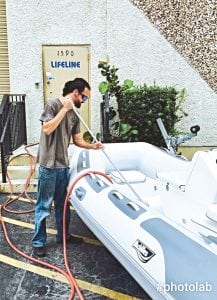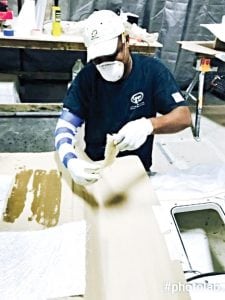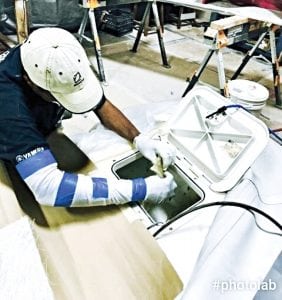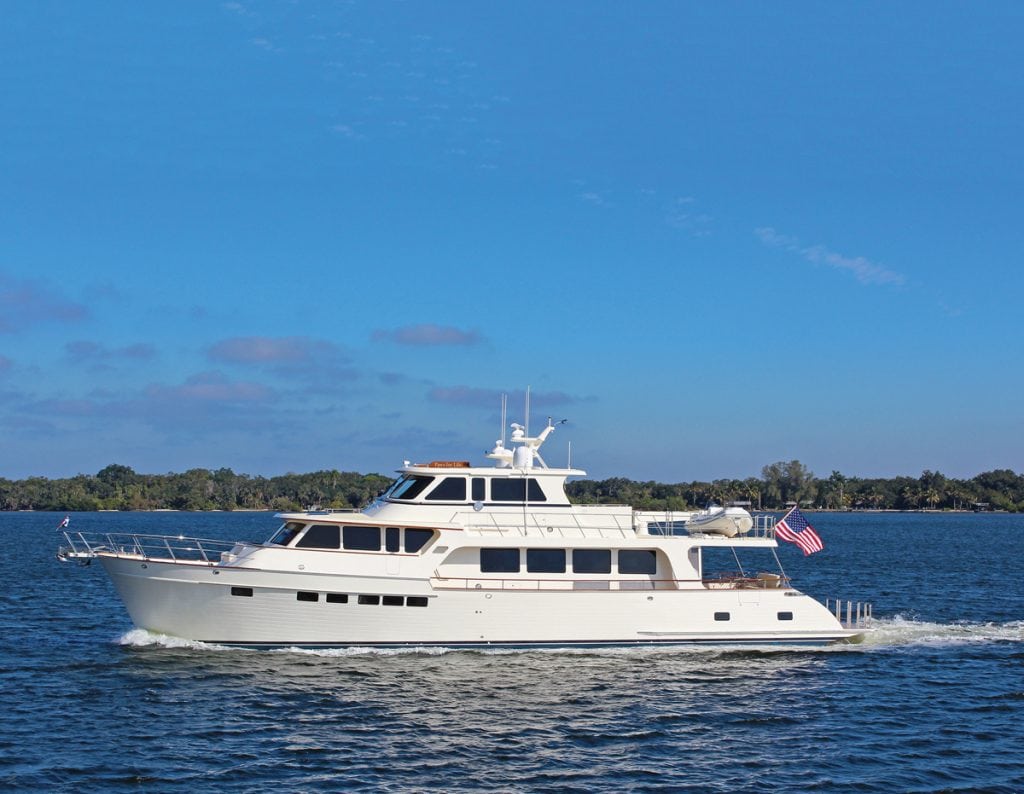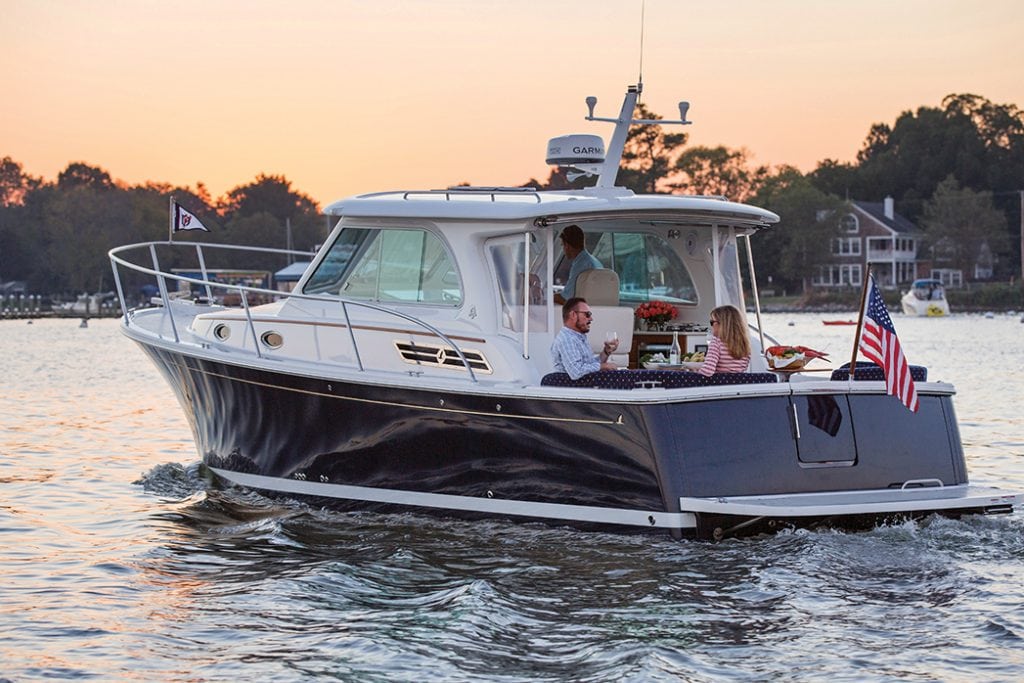Clean, restore and protect your rigid inflatable boat to extend —and enhance—its life and your enjoyment. RIB repair doesn’t have to break the bank.
Because rigid inflatable boats (RIBs) are built like giant dock bumpers, operators may worry less about colliding with other vessels or objects. While it’s true the inflatable collar around the fiberglass hull is great at minimizing damage, RIBs are not indestructible. Here are the details on RIB repair.
Diligent care must be taken to keep your RIB shipshape, and if you do puncture the tube, there are specific fixes required to get the boat back to 100 percent. DIY isn’t always the answer when it comes to RIB repair. “Every boat comes with a repair patch kit,” explains Glenn Gillette, owner of Lifeline Inflatable Services, a RIB dealer and service center with locations in Fort Lauderdale and Miami Gardens, Florida. “The repair kit that comes with the boat is for temporary fixes. To do a proper repair, the boat needs to be in a climate-controlled environment with low humidity.”
In the RIB world, the air tubes are made of either polyvinyl chloride (PVC) or chlorosulphonated polyethylene (CSM). DuPont manufactured CSM until 2009 under the trademark Hypalon, the common brand name for CSM. Both PVC and CSM are used for the RIB collars. PVC costs less and is for lighter-duty RIBs, while CSM fares far better in direct sunlight and humid conditions. Soapy water is the best way to clean the collar and fiberglass interior, followed by a thorough rinse with fresh water. Products containing silicon, such as Armor All, should never be used on either type of air tubes.
“A good cover protects your boat, and it’s good to have some air vents built in so you don’t get mold,” says Gillette, who sells RIBs made of CSM from companies including AB Inflatables, Achilles, Avon, Highfield, Lomac, Sealegs, and Zodiac. “You also want to use a product like 303 Aerospace Protectant. It sprays on and helps protect against UV rays, which can cause discoloration, fading, cracking, and chalking. It also restores lost color and luster. It leaves the surface with a natural finish, with no oily or greasy residue.”
A RIB with a CSM collar is much less susceptible to UV light degradation and can be left uncovered for the season, which makes access and usage easier. A PVC inflatable should be stored in a shaded area with plenty of ventilation. Heat and humidity can weaken the chemical bonds of PVC glue, and sunlight can cause colors to fade. Regardless of
the hull material, what makes a boat a RIB is the collar surrounding a solid hull.
Some inflatables are known as “roll-ups,” meaning the bottom is either fabric or air-filled— i.e., not rigid—and, technically, not a RIB. RIBs can be built with single hulls, double hulls and double hulls with bow lockers. Double hulls offer a hard deck liner so it’s easy to stand up in a RIB, while a single hull’s interior follows the concave contour of the hull bottom.
The air-filled tubes will sometimes need a boost; a hand or foot pump included by the manufacturer will easily do the job. Operating your RIB when the tubes are under-inflated is not recommended and can cause the tubes to flex, resulting in stress on the joints. The tubes should feel tight to the touch, with a bit of a flex from the pressure of a finger. Using a hand pump, it is difficult to over-inflate the tubes, but the biggest mistake people make is not inflating the tubes enough.
A sharp knife, dock nail or another pointy object can puncture a RIB’s air tube and cause a problem, but it’s very unlikely you will sink. That’s because the outer inflatable tubes are chambered off, so the whole boat doesn’t lose air and buoyancy in case of a perforation. In addition, the fiberglass hull also provides flotation. “If you do tear up the tube, we have creative ways to make the repair,” Gillette says. “We can do a special pattern, or make it a panel patch and even add the same on the other side to match. We can also add special handles or make it a different color.”
Do-it-yourselfers can accomplish maintenance tasks such as cleaning and covering the RIB, but when it comes to a major project in RIB repair like replacing the inflatable tube, it’s time for a professional. “The cost for a new tube around the fiberglass hull is about $400 to $450 per foot,” Gillette says. “We help the customer calculate if it’s worth it. For a 10-footer, it might be better to just buy a new boat, while for an 18-footer, a new tube makes sense.”
Once you decide on a new tube, options such as extra handles and pockets can be added, and there are a variety of collar colors from which to choose. Gillette and his team specialize in customizing the tubes for clients. “A big thing when doing a new tube for a tender is matching the color of the yacht,” Gillette says. “That’s where we get really creative, and it’s a way for the owner to have their RIB really stand out.”
lifelineinflatable.com; 303products.com
By Doug Thompson Southern Boating, September 2017
Need more on tenders and RIBS? Check out our list of Top 15 Tenders and RIBS
.

